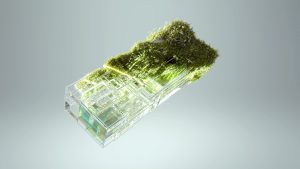The World of Millinery: Understanding the Art of Hat Making
The world of millinery, or the art of hat making, is one that has been around for centuries. From the grandiose headpieces of the ancient Greeks to the extravagant hats of the aristocracy in the 19th century, hats have always played an important role in fashion and culture. But what exactly goes into the crafting of a hat and what makes it an art form? In this article, we will delve into the world of millinery and explore the intricate process of creating a hat that not only looks beautiful but also stands the test of time.
The History of Millinery
The first recorded evidence of hat making can be traced back to ancient Greece where hats were primarily used for protection against the sun. Over time, hats became a symbol of wealth and status and were crafted with elaborate designs and adorned with precious jewels. In the Middle Ages, hat making became a prominent trade and was regulated by guilds in Europe. In the 18th and 19th centuries, hats were an essential accessory for both men and women, with styles changing with each passing decade.
The Craft of Hat Making
The art of hat making involves a meticulous process that requires skill, precision, and creativity. It begins with the selection of raw materials such as fur, wool, straw or silk, depending on the type of hat being made. The material is then washed, steamed, and shaped on a wooden block to create the basic form of the hat.
Blocking
Blocking is a crucial step in hat making and involves the use of a wooden block or mold to shape the hat. Each block is hand-carved to create a specific shape and size, and a skilled milliner can have hundreds of blocks in their workshop to cater to different hat styles. The material is then stretched and molded on the block, giving it its distinctive shape.
Trimming and Decoration
Once the hat has been blocked, it is time for the creative process of trimming and decorating. This is where the milliner’s skills and imagination come into play. From ribbons and feathers to flowers and beads, the possibilities for embellishments are endless. This step often requires the use of specialized tools such as needles, glue guns, and wires, to create intricate designs that add to the visual appeal of the hat.
The Importance of Quality
In the world of millinery, quality is of utmost importance. A well-crafted hat not only looks beautiful but also ensures durability and comfort for the wearer. This is why most skilled milliners use high-quality materials and pay great attention to detail in every step of the process to create a hat that can withstand the test of time.
Maintenance and Care
To maintain the integrity of a well-crafted hat, proper care and maintenance are essential. This includes storing it in a cool, dry place and avoiding exposure to extreme heat or moisture. It is also recommended to have hats professionally cleaned and blocked every few years to retain their shape and quality.
The Evolution of Millinery in Modern Times
With the rise of ready-to-wear fashion and the decline of formal dress codes, the art of millinery has evolved to adapt to the changing times. While hats are no longer an essential part of everyday attire, they are still a prominent feature on runways and special occasions. Milliners today are experimenting with new materials and styles to keep the craft alive, and there is a growing appreciation for handmade, artisanal hats.
In Conclusion
The world of millinery is a diverse and fascinating one that has stood the test of time. As we continue to evolve in fashion, the art of hat making remains a constant reminder of our rich cultural history and the importance of quality and craftsmanship. Whether for practical use or as a statement piece, a well-crafted hat will always be a symbol of elegance and sophistication. So the next time you don a hat, take a moment to appreciate the intricate process and the artistry that goes into creating it.










